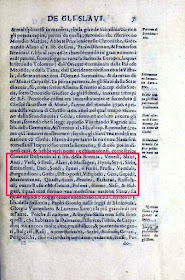Vandals go under names such as Vindelici, Vennones, Sarmatian Venedi, Vouenedai, Bastarnae, Vandili and Lugii.
The first literary reference to this group of people by the Romans can be found in Pliny the Elder’s Natural History . According to this writer, the Vandals, or Vandili, were one of the five groups of peoples, and consisted of several smaller tribes:
The first literary reference to this group of people by the Romans can be found in Pliny the Elder’s Natural History . According to this writer, the Vandals, or Vandili, were one of the five groups of peoples, and consisted of several smaller tribes:
Other writers, such as Tacitus and Ptolemy also mentioned the Vandals, though they used the term Lugii instead.
The next important reference to the Vandals may be found in Cassius Dio’s Roman History . In his work, Dio mentions that during the Marcomannic Wars (166 – 180 AD), a tribe known as the Astingi (identified by some as the Vandals) entered Dacia, and offered their allegiance to the Roman Empire. After this, the Vandals disappeared into obscurity again, and only reappeared in Jordanes’ The Origin and Deeds of the Goths.
In this 6th century AD work, the Vandals are said to have come into conflict with the Goths during the reign of the Emperor Constantine. After being defeated in battle by the Goths, the Vandals migrated into Pannonia. A long time afterward they were summoned thence by Stilicho, Master of the Soldiery, Ex-Consul and Patrician, and took possession of Gaul. Here they plundered their neighbors and had no settled place of abode.
Jordanes goes on to write about the Vandals’ journey into Gaul and Spain during the reign of Emperor Honorius (393 – 423 AD),
Now the Vandals and the Alani, as we have said before, had been dwelling in both Pannonias by permission of the Roman Emperors. Yet fearing they would not be safe even here if the Goths should return, they crossed over into Gaul. But no long time after they had taken possession of Gaul they fled thence and shut themselves up in Spain.
Mauro Orbini
Regni de gli Slavi
16.ct.
page 7
Slavs are Bohemians, Venedi, Slaui, Anti, Verli, Eruli, Alani, Massageti, Hyrri, Seyri, Sirbi, Emincleni, Daci, Suedi, Fenni, Finni, Prussi, Vandali, Burgundioni, Gothi, Ostrogothi, Geti, Gepidi, Marcomanni, Quadi, Avari, Peucini, Bastarni, Rossolani, Russi and Moscowits, Poloni, Boemi, Slesi and Bulgari.
The Slovaks of Hungary- Slavs and Panslavism,
Thomas Capek, Knickerbocker Press, 1906Aryans that called themselves Srbove - relatives, family
(still present in word of Skrb, skrbnik - family related,
old Slavic S is normaly SK,
SK is present in old name of Sklavs as Skoloti or Skitians)
Albert Krantz, 1519.
Polish stems from Wandals
Wandals are Slavs
Wenden are Vandalen
Barbars, Varvars are Vandals
Christinae - Svecorum - Gottorum et Vandalorum Reginae
Wenden = Slavo Vandalica, Venedig
Trojans are Vandals moving to area between Adriatic and Dinaric Alps and forming Illyria and Dalmatia
Veneti or Heneti, both names are used
Obodriti or Avari or Obri are Slavs
13 kingdoms of Slavs (it's the same today, 13 states)
Slavs and Germans are fruit out of the same tree.




This comment has been removed by the author.
ReplyDeleteThanks for help Arianna! :)
DeleteThis comment has been removed by the author.
DeleteOf course she is our Żena! No doubt!
DeleteI checked Wanda and she was real. Thanks.
"13 kingdoms of Slavs (it's the same today, 13 states)
ReplyDeleteSlavs and Germans are fruit out of the same tree."
У обредној песми Срба "БЕЛИ ДУНАВЕ ВО ДАЛЕКА ЗЕМЉА ИНЂИЈА" наводе се 13 племена Срба, називе неких племена су вероватно промењена изамењена другим како се изгубила веза са удаљеним племенима. Сама подела је вероватно урађена по 12 сазвежђа, исти принцип су применили Етрурци и Јевреји поделивши се на 12 племена док је 13то племе извор од којих су сви потекли...
Vrlo pametan zakljucak, to 13to pleme je najvaznije.
DeleteIndjija se zvala Vindia ,nalazi se u SZ spletu planina koji i danas nose to ime.
Hindu-Indu-Vindi dalje pokazuje prominu slova H-V-'(ne pisanje zvuka se oznacava sa koma), isto je sa Jeres-Heres-Eres-Veres(vira/vera)...
This comment has been removed by the author.
ReplyDeleteИако има више него довољно материјала који показују везу Срба са просторима индо иранским платоом збуњујуће је њихова религијска доктрина јер нема извор на том простору већ у Месапотамији. Једини период у историји човечанства нама знаној да је Нова година слављена за време пролећа је била у време зодијака Бика и за зачетника тог култа историја узима Мардука из Вавилона (постоји и Мардук из Ерида пре ове промене) који постаје владајући бог и први суммус деус (Хамураби је увео реформе календара а тиме и религије како је религија астрална), сад ако би упоредили чистоћу вера Словена са индијском верзијом и вавилонском видеће се да је упореда са вавилонском истоветнија и чистија него са индијским верзијама. Кад мислим на упоређивање вере пре свега мислим на годишње фестивале који су се дешавали у истоветно време како је основа рачунања календара била истоветна а то су "Четри угла света" и 28 месечевих поља који су делили годишњу сунчев пут.
DeleteИ још једном хвала, навод из дела Алберта Кранца ако и кад утврдим која су 13 првобитних племена добиће се и оквирно време када су се поделили, за сада је сигуно да то није могло бити раније од 1700гпх.